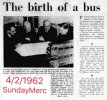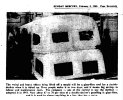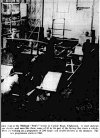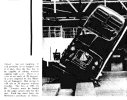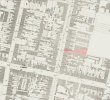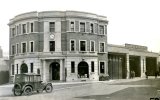-
Welcome to this forum . We are a worldwide group with a common interest in Birmingham and its history. While here, please follow a few simple rules. We ask that you respect other members, thank those who have helped you and please keep your contributions on-topic with the thread.
We do hope you enjoy your visit. BHF Admin Team
You are using an out of date browser. It may not display this or other websites correctly.
You should upgrade or use an alternative browser.
You should upgrade or use an alternative browser.
Midland Motor Omnibus Co Midland Red
- Thread starter Vivienne14
- Start date
mw0njm.
A Brummie Dude
i think the d9 is a ugly fronted bus compared to our bct buses

I think the D9 buses were far better than some of our rear engine buses; quiet, powerful and a better ride with their independent front suspension, and of course, were the first double deckers fitted with front disc brakes, although they had problems, apparently, finding a high melting point grease for the front wheel hubs.i think the d9 is a ugly fronted bus compared to our bct buses

PA739
Lloyd
master brummie
Don't knock them all, Midland Red tried the idea in the early 30s!rear engine buses grrrrrrrrr.
Attachments
mw0njm.
A Brummie Dude
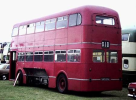
 This fascinating d10 vehicle was the first of two prototype underfloor-engined double deckers built by Midland Red in 1960/61. .
This fascinating d10 vehicle was the first of two prototype underfloor-engined double deckers built by Midland Red in 1960/61. .
The bus only lived twice.
This rather grainy photograph, from sources unknown, shows a Midland “Red” bus carrying the registration CHA2. It’s a rather unassuming looking underfloor engined vehicle that wou…
 mundaneonline992633965.wordpress.com
mundaneonline992633965.wordpress.com
Lloyd
master brummie
A bit earlier than 30s, Viv! This type was introduced in 1913, and one survives at the Transport Museum Wythall in the livery of Birmingham Corporation who took over all routes totally within the city boundaries in 1914, along with sufficient buses to operate them. Midland Red then concentrated on expanding over much more of the midlands eventually becoming the second largest bus operator in the country outside of London Transport.A 1930s Midland bus of the Birmingham to Harborne Route.
viv.
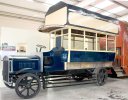
Oh dear, should have been 1913 - yes Lloyd, as per postcard info ! Time for an eyetest. Thanks. Viv.
Does anyone have any information on The Birmingham Bus company, based in Mary Street in 1900? My grandfather's attestation papers when he joined the Royal Warks. regiment in 1900 stated that he worked for a Mr Pritchard at that company. This appears to be over a decade before the Midland Omnibus Company started. Thanks. Pete
Lloyd
master brummie
Was that Mary St, Balsall Heath? What was you grandfather's name, and home address at the time?Does anyone have any information on The Birmingham Bus company, based in Mary Street in 1900? My grandfather's attestation papers when he joined the Royal Warks. regiment in 1900 stated that he worked for a Mr Pritchard at that company. This appears to be over a decade before the Midland Omnibus Company started. Thanks. Pete
It was Mary Street, Balsall Heath. His name was Alfred Bromley and he lived in Belgrave RoadWas that Mary St, Balsall Heath? What was you grandfather's name, and home address at the time?
That's great! Thank you very much for this information. Looks like the tramway went past the door!The firm first appears in Kellys in the 1897 edition. By 1903 it is The British Electric Traction Co. , They are still there in 1904.but have gone by 1908
Lloyd
master brummie
The British Electric Traction Co. owned many of the private tramway companies across the country, and their associated horse bus companies. The latter were later amalgamated and became the basis of what became the Birmingham and Midland Motor Omnibus Co., better known as the Midland Red. After the amalgamation, several of the smaller depots were closed and operations centred on larger ones.
Here is the sort of horse bus operated in those days.

Here is the sort of horse bus operated in those days.

Lloyd
master brummie
These were the original offices at Digbeth, dating from when the garage was built in1929. The Spencer House I knew was larger, built partly on that site but stretching further east along Digbeth as well.Spencer House, Digbeth Garage, Birmingham, the building being the offices of Midland 'Red' Motors.
View attachment 175473
The present offices at the coach station were built on the frame of the later Spencer House, which was named after John Spencer Wills (1904-1991), a director of the company and son in law of the then chairman of the British Electric Traction group.
Last edited:
Lloyd
master brummie
That's why I don't think the original building was called Spencer House. He only married Elizabeth Garke in 1936!Nice. Buiding named after him by his father in law when he was only 25 !

